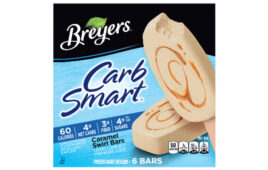The right assortment, coupled with a local brewery presence, will enable craft sales to splurge.
By Brad Perkins, Contributing Editor
It’s safe to say that craft beer is a fully mainstream product. New breweries are popping up seemingly everywhere— there are more than 6,000 in the U.S.—and though they’re smaller, at least in terms of sales, they dominate public opinion.
Demand for craft brews and Mexican beers in the U.S. reflects a shift in Americans’ drinking preferences—a trend accelerated in 2018. Beer shipments from U.S. breweries are down 3.5% so far this year, according to The Beer Institute, an industry trade group.
The big four U.S. brands—Bud Light, Miller Lite, Coors Light and Budweiser—have experienced declining sales.
On the other hand, the Beverage Marketing Association recently noted that in convenience stores, craft beer only accounts for about 8-10% of beer sales and less than 20% of inventory. Moreover, craft beer sales grew 5% in 2017, according to the Brewers Association.
With sales and interest on the rise, it’s easy to see why the major players are hedging their bets. For instance, Bud Light this past April expanded the brand’s citrus portfolio with a refreshed Bud Light Lime and the addition of Bud Light Orange. Both light lagers are brewed with real lime and orange peels.
Beyond just flavors, Anheuser-Busch over the last seven years has purchased 10 smaller breweries, including Goose Island, Breckenridge and Blue Point, and is poised to be the largest craft brewery owner in terms of sales. Those 10 breweries’ sales grew 20% through the first half of 2018, according to Beer Marketer’s Insights, to $100 million, surpassing both Sierra Nevada and Boston Beer Co.
With larger companies’ purchasing top brands and smaller brands working out distribution deals, the availability of craft beer has never been higher. Market research firm Mintel’s “Beer and Craft Beer—U.S. Market Size and Forecast, October 2017” report showed that up to 50% of U.S. beer drinkers choose craft beers, “Beer Marketer’s Insights’ C-Store Snapshot” indicates just a 0.4% spike in craft sales so far in 2018.
Helping balance overall U.S. beer volume sales is the increasing demand for Mexican brands.
“Mexican beer and local craft continue to experience the strongest trends, while domestic lights continue to decline, but remain the largest beer segment within convenience stores,” said Brian Sudano, managing partner of Beverage Marketing Corp.
MERCHANDISING CRAFT
Despite still being the largest, the need for macro breweries to share shelf space is on the rise. And that space is increasingly being shared by both national and local brands.
“I think having an assortment of craft is absolutely the right thing. It’s just a matter of making sure you have the right assortment and you can be localized enough with an assortment,” said Jason Homola, director of category management at Wawa, which operates 800 stores in Pennsylvania, New Jersey, Delaware, Maryland, Virginia, Florida and Washington, D.C. “We’ve over-spaced in craft if you look at it as a percentage of sales, but that was done intentionally to make a stance that we are going to carry local brands as well as craft breweries.”
Wawa provides its customers enough selection to satisfy various preference, including premium, ultra-premium and craft
“I would say the premium and the ultra-premium products are still the crux of the business,” Homola said. “We focus on craft as being a differentiator for us as we’ve entered the beer market more heavily in Florida, so we’ve tried to pride ourselves on carrying a broad enough assortment in both the cold box and the beer vault for craft.”
Beer vaults or caves are an important factor in craft sales. With more room to stock, comes the ability to have a greater selection. In Florida, Wawa entered the market with a mix of national players like Dogfish Head and Sierra Nevada and local breweries as well as other states.
“It’s very important that we get localized with things like Cigar City in Tampa and other localized products,” Homola said. “We have one store where we sell beer in Pennsylvania, and we have some items from Conshohocken brewery and some other local Pennsylvania breweries. We think it gives a good local feel to the store and helps support some of the local businesses.”
Mike Clifford, category manager at Clifford Fuel, which runs 18 stores in central and western New York, agrees with that assessment. His stores have seen an increase in local and New York brands.
“Locally for us, Saranac, Ommegang and Good Nature brands have all grown in sales,” said Clifford. “The sales for Southern Tier, another New York state brand, have increased significantly. The national brands like Sierra Nevada, Lagunitas and New Belgium have performed well, but are not growing at the same rate.”
PACKAGING SELLS
Packaging is also a trend that continues to grow. Earlier this year, Clifford Fuel added 19.2-ounce cans of Founders All Day IPA, which, along with other 16-ounce craft offerings, were two sizes that had been lacking in the craft beer category.
“The craft single cans have performed really well this year. We are up 36% in units sold as a chain,” Clifford said.
Those sales have also grown not only because they found a niche—no other craft beer targeted the single-serve category—but because, while craft beer sales are about taste and availability, catching shoppers’ eyes doesn’t hurt, either.
“Some of the new packaging out there has been effective, from different size cans and bottles and some package size innovation,” said Homola. “I think what they’re trying to do is to increase usage during different occasions when that size better suits that occasion, and to make it a little more mainstream.”
In terms of craft , retailers shouldn’t be too one-sided.
“In a convenience store where you’re operating at a finite amount of space, you’ve got to be careful not to damage the premium product lines or the discount product lines by carrying too much craft because there is still a huge consumer base looking for those,” he said.
But for now, the future seems bright. Even with news of breweries closing, many more are opening and thriving. Mintel’s report predicted yearly growth of at least 3% yearly in the category through 2022.
“Continued momentum in the economy and employment should support continued growth in beer within convenience stores, especially in high-end, including local craft and healthy-lifestyle beer,” Sudano said.
Sustaining that growth means a balance of selection, price, assortment and seasonality. It’s important to rotate the stock, and to work with distributors.
“I think it’s going to continue to grow. I see no reason why craft won’t continue to grow as a share of sales,” Homola said. He added craft beer customers are less price sensitive and more assortment driven.“It’s really about making sure you’re capturing that growth and carrying the right assortment, which I think is the hardest line to walk.”




